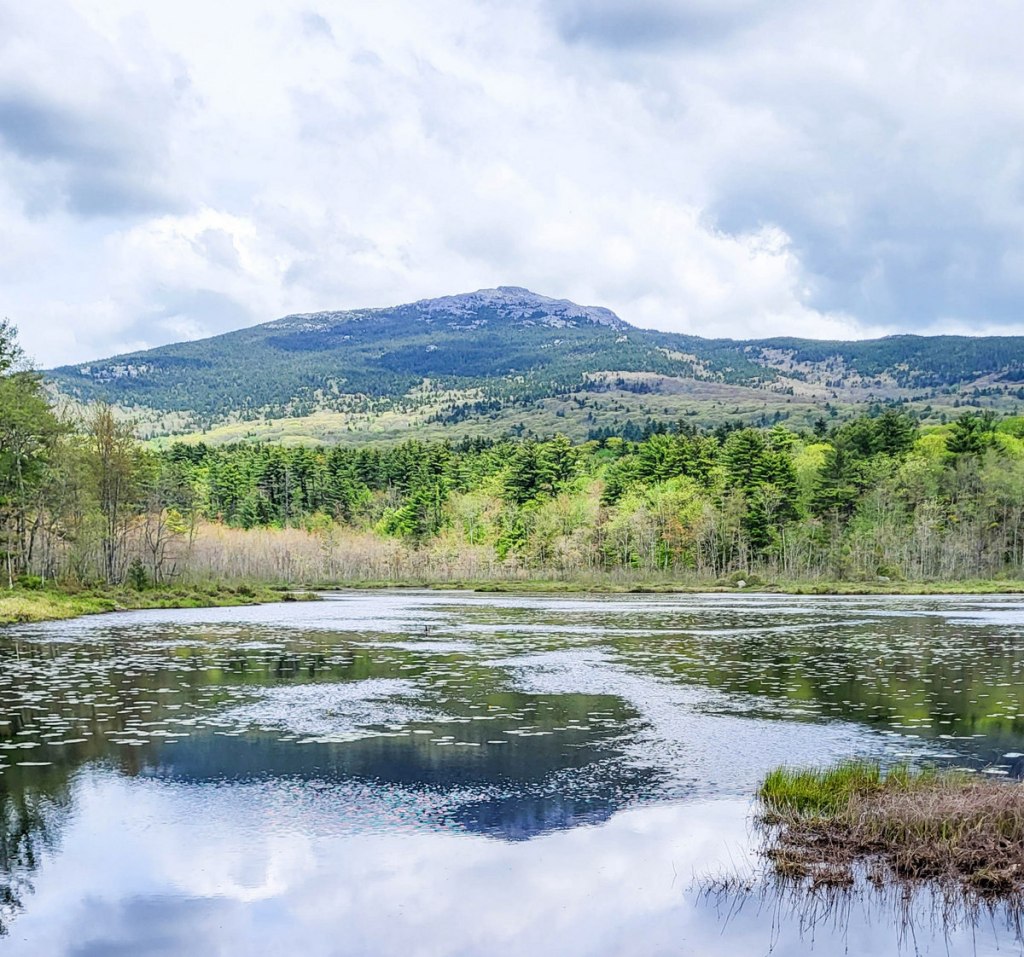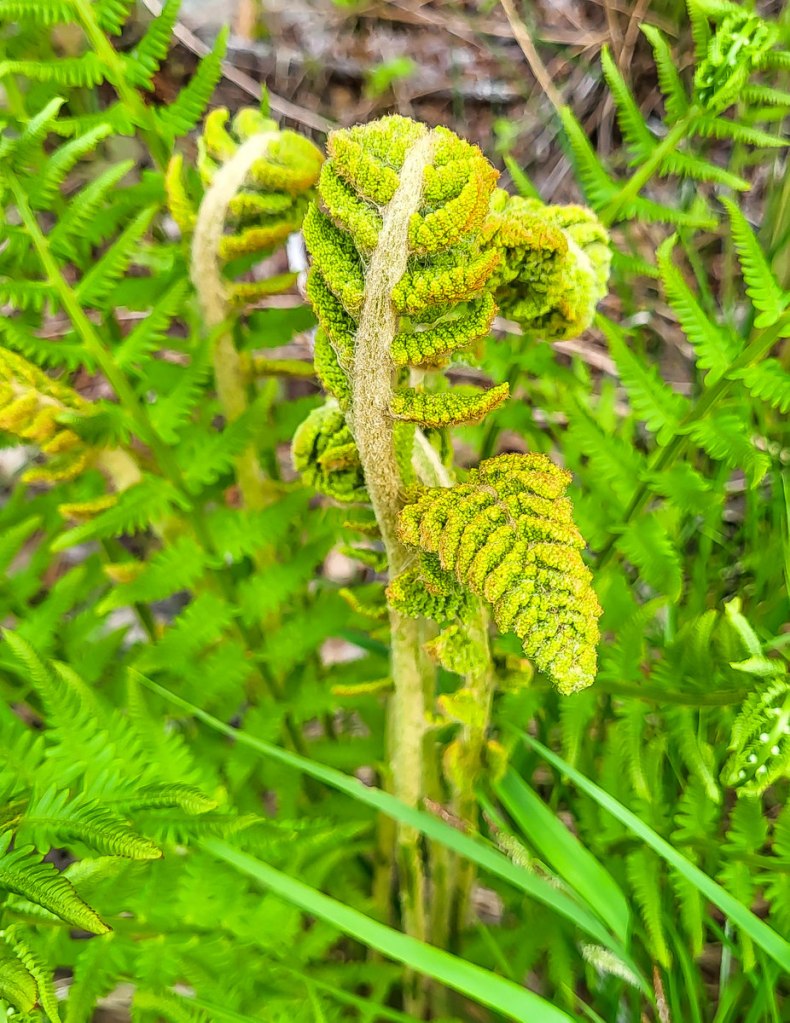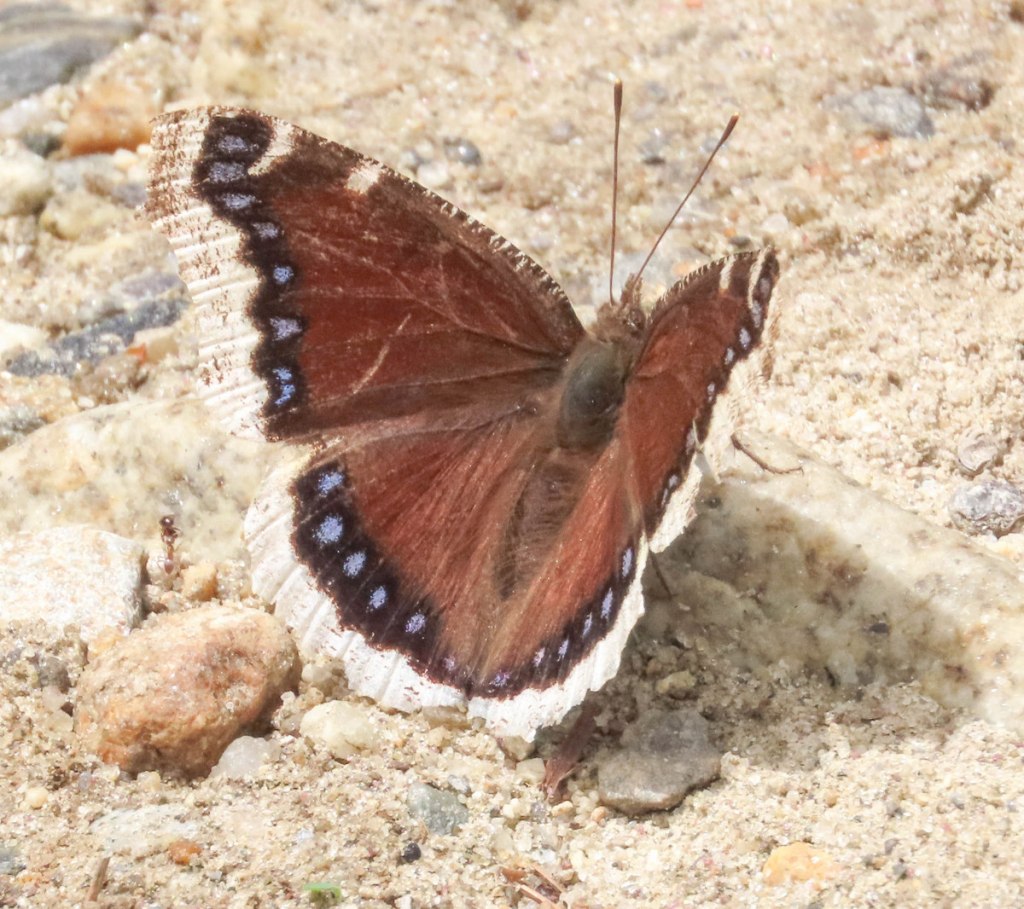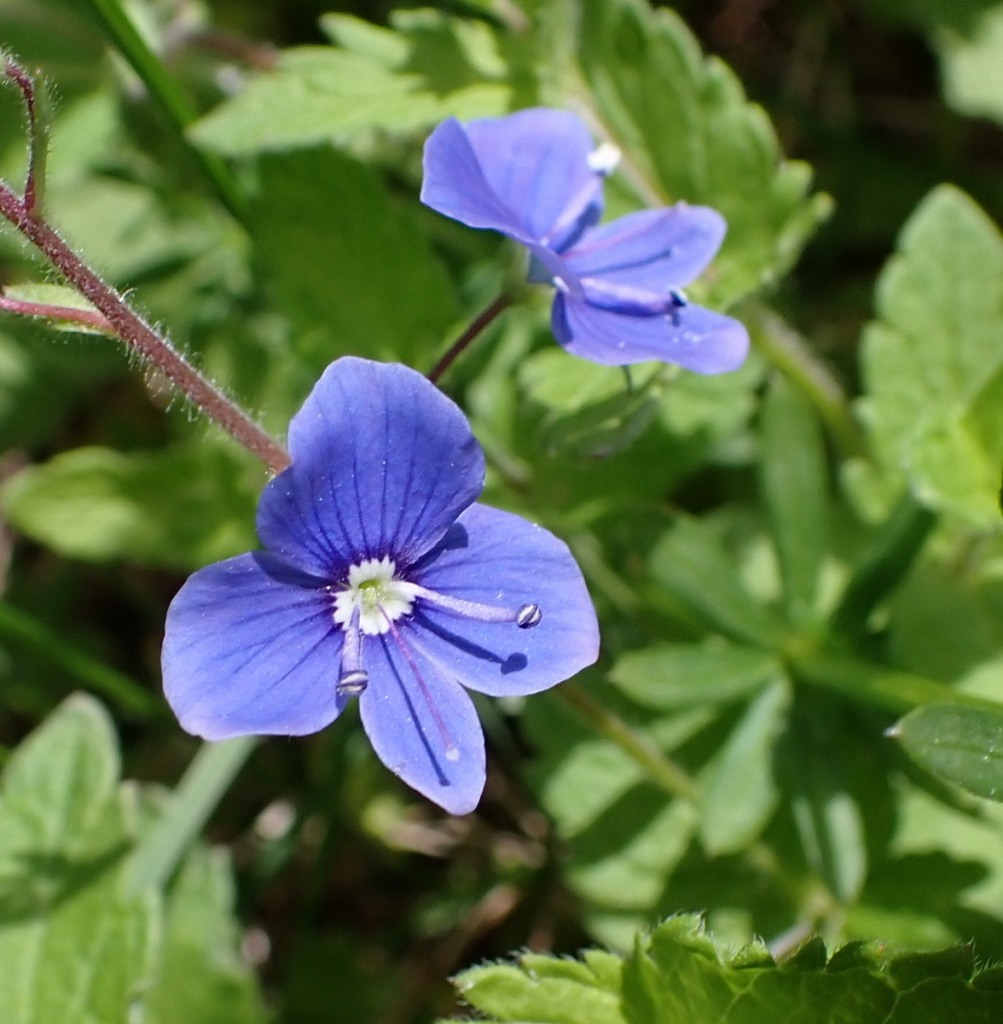
I’m starting this post off over in Troy at Perkin’s Pond. Since I was nearby I thought I’d stop and see how Mount Monadnock looked under cloudy skies. Usually when I come here the sky is blue without a cloud in it but I like clouds in my mountain photos, especially when they’re casting shadows on the landscape below. I was surprised to find that I was the only one here. You can often find a line of cameras and sometimes even an easel or two here on summer days. Mount Monadnock is very popular among artists and photographers, and especially climbers. It is the second most climbed mountain in the world in fact, after Mount Fuji in Japan. 125,000 people from all over the world climb it each year and on a pleasant summer day it can be like standing room only up there. That’s why I stay down here.

If you scroll back up to that previous shot to see the bare trees along the pond edge in the far distance you’ll see where this Canada goose was when it and its mate started swimming toward me. They swam quickly across the pond straight to me, honking loudly the whole way, and then one of them stopped and let its mate come ahead. This one stayed a few feet off shore and acted as if it thought I had something for it, but all I had was a question: “Why did you swim all the way across the pond like that?” I asked. The only answer was a honk and stare before it turned and showed me its tail feathers, and swam back toward its mate.

I saw lots of contorted ferns along the pond that looked as if they were dancing. These were interrupted ferns, and I know that because the spore bearing leaflets appear half way up the stem, “interrupting” the non- fertile leaves. The leaflets seen here are covered with sporangia, which are tiny spore bearing spheres. It won’t be long before they release hundreds of thousands of spores per plant.

From Troy I went to another pond in Marlborough to see if the rhodora were blooming. They were, and they were beautiful as always. The water was high and they were in standing water so I couldn’t get close but I didn’t have to. This beautiful knee high shrub is in the azalea / rhododendron family. The beautiful blooms don’t last more than a few days so I usually visit them a few times to make sure I don’t miss them. They aren’t rare but they aren’t common either because they’re fussy about where they grow.

Another reason I came here was to see the painted trilliums, which in my opinion are our most beautiful trillium. It is our third and last one to bloom, following the nodding trillium which I didn’t see this year. They don’t often grow in large colonies like the purple trilliums but there are quite a few singular plants here.

This one had several friends over and was being pollinated, so I didn’t stay long. Note how one of the petals points to the ground on this plant while on the one in the previous photo it pointed to the sky. As far as I can tell this doesn’t mean a thing other than that was just the way the plant wanted it.

There were tiny, aspirin size goldthread flowers blooming everywhere.

Goldthread has a busy flower with lots of white tipped anthers, goose neck styles, and true petals that look like tiny golden spoons. The larger white sepals fall off once their work of attracting insects is finished. The name comes from the plant’s thin golden roots, which were once collected to treat canker sores. That gave the plant another name: canker root. So many plants were collected they became harder and harder to find, and it took many years for them to recover. I never tell anyone where the large colonies are.

When I got back to the car there was a mourning cloak butterfly there “puddling.” Every time I’ve seen one of these butterflies it has been very near or in a forest, resting in full sunshine. They appear quite early in spring and are said to be freeze tolerant, though this one was looking a little worse for wear. The name comes not surprisingly, from the cloaks once worn by mourners in medieval Europe. This is an easy to see butterfly, with a wingspan of about 3.5 to 4 inches.

I saw a little garden of strawberries and bird’s eye speedwell clustered around a fence post.

Bird’s eye speedwell is also called germander speedwell and though it isn’t native I’ve noticed it appearing more and more in public park gardens. I’ve always thought it was the prettiest of all the speedwells, which are in the Veronica family. One story of where the name speedwell comes from says it is because of the plant’s use in treating several medical disorders. Our native Veronica (Veronica Americana) was used by Native Americans to ease the symptoms of asthma and allergies.

As I drove through Marlborough I saw a hillside with what appeared to be a beautiful blue mist flowing over it out of the corner of my eye. I had to stop and get a better look.

The mist was caused by thousands of forget me nots; the most I’ve ever seen in one spot. They were very beautiful and I immediately began thinking about how I could replicate the scene in my own yard. I should also say that these flowers were covered with several kinds of bees; so many that I’m surprised none appeared in this photo.

I left Marlborough and went to the wetlands in Swanzey, where I found wild geraniums blooming. They bloom along the road in the tall, unmown grass just at the edge of the woods. It is also called wood geranium and if you’re lucky enough to stumble into a natural sunny clearing in the woods you might find them blooming in very large numbers. Another name is crane’s bill, named for the way the seedpods resemble a crane’s bill, but you don’t hear that name used much anymore.

The skunk cabbages are fully grown now and are taking up a lot of space in the wet areas. One of the interesting things about these plants is how their leaves turn black and liquify, and completely disappear.

Red sandspurry is a non-native plant that could hardly be called invasive, because it grows in the sand at the edges of roads for a while and then disappears. The flowers are tiny; maybe as big as a BB that would be used in an air rifle, but they can be numerous and that makes them easier to see. As this photo shows, the plants and buds often have the sand they grow in stuck all over them, as if they’re covered with some kind of sticky natural glue. I don’t know if that’s where the name sandspurry comes from but according to the Oxford English Dictionary the word first appeared in 1860.

Hawthorns are blooming. I’ve always liked their colorful anthers so I was happy to see them. These are uncommon trees that you don’t see too many of but every now and then I run into a small group of them. There are over two hundred species of hawthorn if I remember correctly, including hawthorns brought over from England, so I don’t bother trying to identify them. They’re beautiful and adding a name doesn’t change that.

I was surprised to find a bunchberry plant in full bloom, because this is normally a June flower. In fact as I look back at this blog I find that June first is the earliest I’ve seen it. This year though, here it was a full two weeks earlier. This plant is in the dogwood family and like other plants in that family its true flowers are the tiny greenish ones in its center. The larger white bracts are there to help insects find the true flowers. If pollination is successful later on there will be a bunch of bright red berries where those tiny flowers are now, and that’s where the name bunchberry comes from.

It’s looking like we’re going to have quite a blueberry harvest this year. I watched several bumblebees pollinating these blossoms.

I’ve read that yellow warblers like to be in thickets along streams and that was exactly where this one was before it flew up and landed in a small tree. They’re small birds, maybe a little bigger than a goldfinch, and are said to be one of the most numerous birds in this country. Since I imagined that I had never really seen one until I got this photo that tells me that I’ve probably been mistaking them for gold finches as they zipped by. Though as I look at the photo I see lots of differences between the two birds I also see the same yellow color and when they fly by at top speed I’d guess that is probably all I see. They are fast, busy little birds.

One of my favorite quotes is by Marcus Aurelius who wrote, “Dwell on the beauty of life. Watch the stars, and see yourself running with them.” I thought of that recently when I looked down and saw that I was standing in a patch of star chickweed. The plant’s scientific name is Stellaria pubera, and the Stellaria part of it comes from the Latin words stella, meaning star, and -aria meaning “pertaining to,” referring to the shape of the flowers. It’s my favorite chickweed and I find it in the tall unmown grass at the edge of forests and along trails. This plant is all about fives, and if you look closely you find that what you thought were ten petals are actually five deeply cut petals. Why not go and find some and see yourself running with them? Or maybe through them.

The invasive Japanese honeysuckles are blooming. I believe this is a Tartarian honeysuckle because of the pink flowers. We have two other invasive honeysuckles and they have white flowers. These plants are shrubs that might reach 6-7 feet tall. All three have flowers that fade to yellow as they age. As shrubs they grow close together and form thickets that are just about impenetrable. They also shade the ground and prevent most seedlings from other plants gaining a foothold. There are many hundreds of thousands of them scattered along trail edges and in forests and I doubt we’ll ever be able to beat them back, even if an army tried.

I found what I initially thought was an insect egg mass but what turned out to be a crown rust infection (Puccinia coronata) on several common buckthorn bushes by a pond. It is also called cluster cup rust fungus and two hosts are required to complete its life cycle; common buckthorn and another host from more than 45 genera of grasses, including oat, barley, rye, quackgrass, slender wheatgrass, western wheatgrass, and foxtail barley. I found it this day on a native shrub, but it occurs worldwide. It can also appear on glossy buckthorn, which is invasive. Though it seldom kills entire plants it can damage the foliage of grain crops.

Tiny gelatinous cigar shaped galls burst open and release spores into the atmosphere. This shot is highly magnified. If you take a pencil and make a dot on a piece of paper you’ll have a good idea of the size of the cup shaped “craters” seen here. I could see them on the underside of this leaf without magnification, but just barely. I saw more color difference than shapes, I think.

One of the most beautiful flowers found in May is the wild early azalea, also called wooly azalea due to how its buds and the backs of the flowers are so hairy. It is those hairs that emit a delicate fragrance that is kind of spicy but sweet, and one which can be detected from yards away. I’d have to say that the plant is uncommon but not rare in this area. If it finds a place it likes you can see many of them but it’s very picky about where it grows so for that reason you only find it here and there. A six foot tall plant full of flowers like those seen here is a beautiful thing and well worth looking for.
Rest is not idleness, and to lie sometimes on the grass under trees on a summer’s day, listening to the murmur of the water, or watching the clouds float across the sky, is by no means a waste of time. ~John Lubbock
Thanks for stopping in.